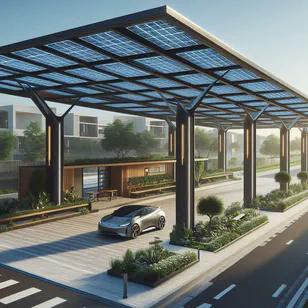Introduction
When setting up a solar energy system, the orientation and configuration of your solar panels play a crucial role in maximizing energy production. For homes with an East-West facing roof, this setup can be particularly advantageous. Such an arrangement allows for higher energy generation during the morning and late afternoon, aligning well with household energy consumption patterns.
Can You Connect Solar Panel Strings in Parallel to a Single MPPT Inverter?
The answer is yes, with specific guidelines in mind. Here’s how you can effectively and safely connect solar panel strings to a single Maximum Power Point Tracking (MPPT) inverter:
Equal Number of Panels in Each String:
Ensure that each string of panels has an identical number of panels. For instance, you could have 6+6 or 8+8 panels, ensuring balanced energy input.Identical Panel Specifications:
All panels in the setup should have the same specifications. For example, using 8 panels of 410 Watts on both the east and west sides of the roof helps maintain uniformity and efficiency.Current Considerations:
Since the voltage in this setup will match that of a single string while the current doubles, your MPPT inverter must be capable of handling the combined current. For instance, 8 panels of 410 Watts each can produce a maximum current of 25 amps, which is typically within the capacity of most controllers.Avoiding Excessive Power Loss:
If the current exceeds the inverter’s capacity, it will curtail the extra power, potentially wasting energy. Therefore, ensure that your inverter can handle the peak current to avoid unnecessary losses.Connector and Splitter Considerations:
Most connectors and splitters can heat up at 30 amps, so if your system produces more than 27 amps, consider using a junction box instead of a splitter. This precaution is crucial, especially in low-voltage MPPT setups, where the design current can reach up to 80 amps.Asymmetrical Panel Setup for Low Voltage MPPTs:
In low-voltage MPPT systems (60-145V), it’s sometimes possible to have an asymmetric panel arrangement, like 8 panels on one side and 4 on the other. For example, a 4+4+4 setup or a 3+3+3 setup can work depending on the panel specifications.No Need for Diodes:
Modern panels don’t require diodes for parallel connections, simplifying the installation process.
Conclusion
In summary, connecting solar panel strings in parallel to a single MPPT inverter is possible and can be highly efficient if done correctly. The key is to use strings of the same number and type of panels, ensuring the MPPT is rated for the total current. While the ideal setup involves identical panels, sometimes practical limitations require different configurations, which should be planned with professional guidance. This approach allows you to maximize the energy output from your solar panels, particularly on East-West facing roofs, providing ample energy during peak household consumption times.




